Must-See Skywatching Events for June 2012
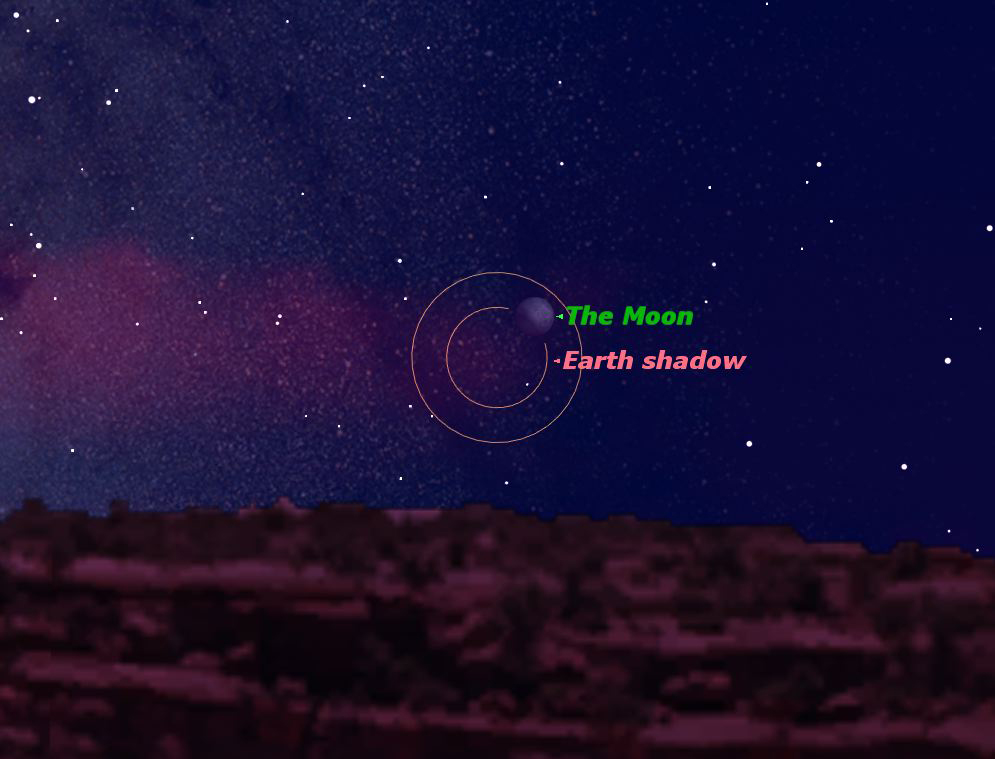
This page has been moved & improved. See our new Night Sky events & information page (and consider bookmarking it — it will now be updated at the same url every month).
Meantime, the information below remains as originally presented.
In June 2012, the full moon dips through Earth's shadow in a partial lunar eclipse, then Venus crosses the face of the sun in a rare transit - the last for more than 100 years. Take a look at June's most promising skywatching events below and happy stargazing!
Moon Phases
Mon., June 4, 7:12 a.m. EDT
Full Moon
The Full Moon of June is usually called the Flower Moon. In Algonquian it is called Strawberry Moon. Other names are Honey Moon, Rose Moon, Hot Moon, and Planting Moon. In Hindi it is known as Wat Poornima. Its Sinhala (Buddhist) name is Poson. The Full Moon rises around sunset and sets around sunrise, the only night in the month when the Moon is in the sky all night long. The rest of the month, the Moon spends at least some time in the daytime sky.
Get the Space.com Newsletter
Breaking space news, the latest updates on rocket launches, skywatching events and more!
Mon., June 11, 6:41 a.m. EDT
Last Quarter Moon
The Last or Third Quarter Moon rises around 1 a.m. and sets around 1:45 p.m. It is most easily seen just after sunrise in the southern sky.
Tue., June 19, 11:02 a.m. EDT
New Moon
The Moon is not visible on the date of New Moon because it is too close to the Sun, but can be seen low in the east as a narrow crescent a morning or two before, just before sunrise. It is visible low in the west an evening or two after New Moon.
Tue., June 26, 11:30 p.m. EDT
First Quarter Moon
The First Quarter Moon rises around 1 p.m. and sets around 12:45 a.m.
Observing Highlights
Mon., June 4, morning
Partial lunar eclipse
A partial eclipse of the Moon visible over western North America, here seen just before sunrise from Canyon de Chelly, Arizona.
Tue., June 5, afternoon
Transit of Venus
The last chance to see Venus pass between Earth and the Sun in the 21st century. The 2012 transit of Venus is the last one visible from Earth until 2117.
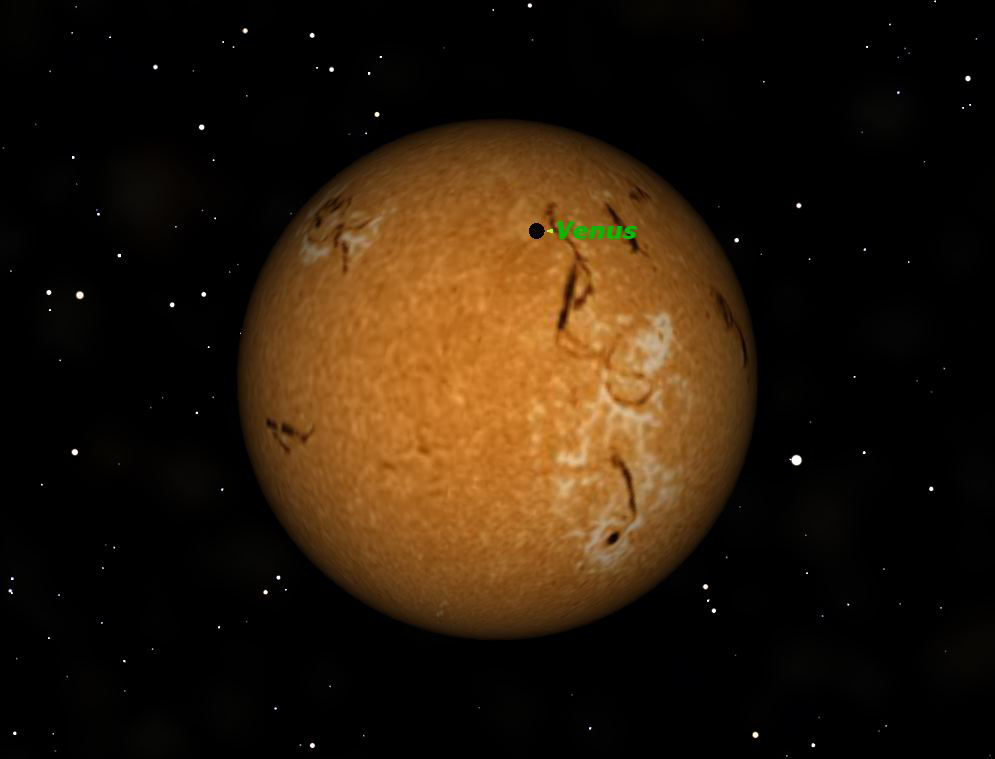
Sun., June 17, dawn
Triple conjunction: Moon, Venus, Jupiter
The three brightest objects in the night sky are gathered together in a triple conjunction at dawn in the constellation Taurus.
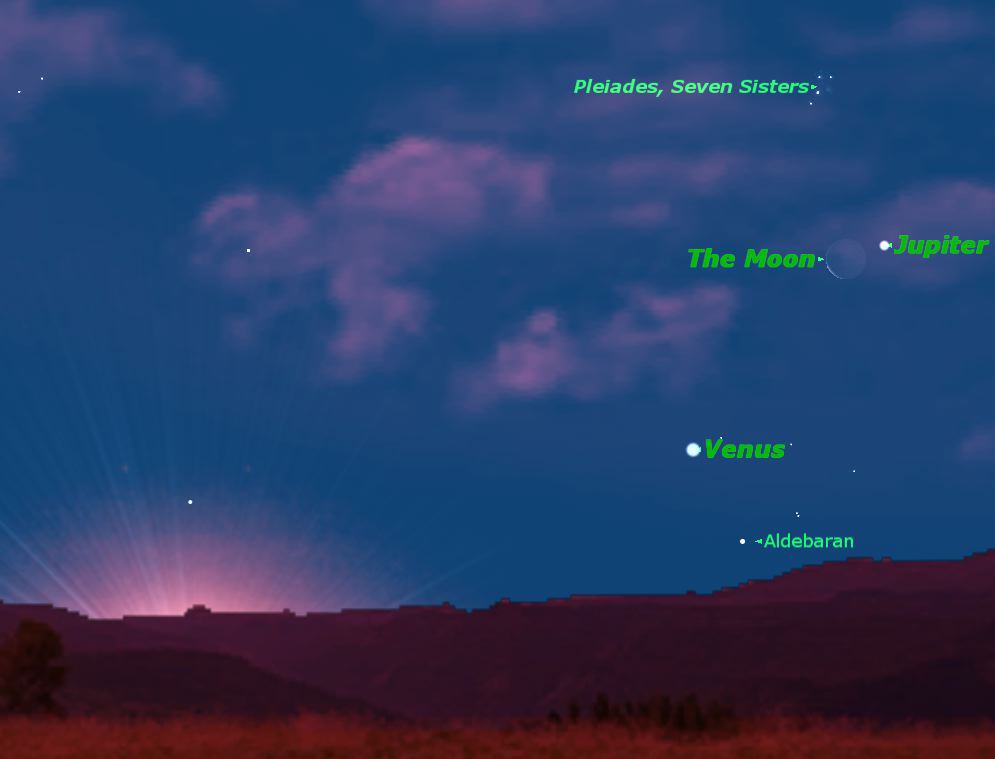
Thu., June 21, evening twilight
Castor, Pollux, Mercury and the Moon
Just after sunset, a slender crescent Moon points the way to the planet Mercury and the twin stars Castor and Pollux in the constellation Gemini.
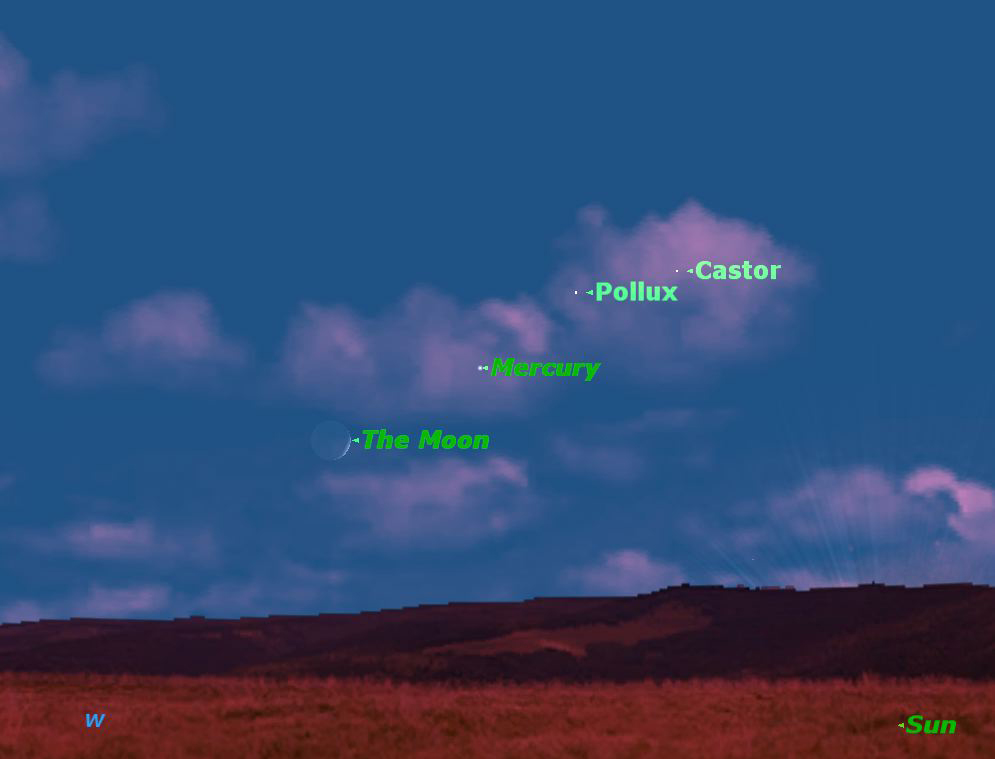
Wed., June 27, evening
Triple conjunction: Moon, Saturn, Spica
Another triple conjunction: Saturn and the first quarter Moon join the first magnitude star Spica in Virgo in the southwestern sky just after evening twilight.
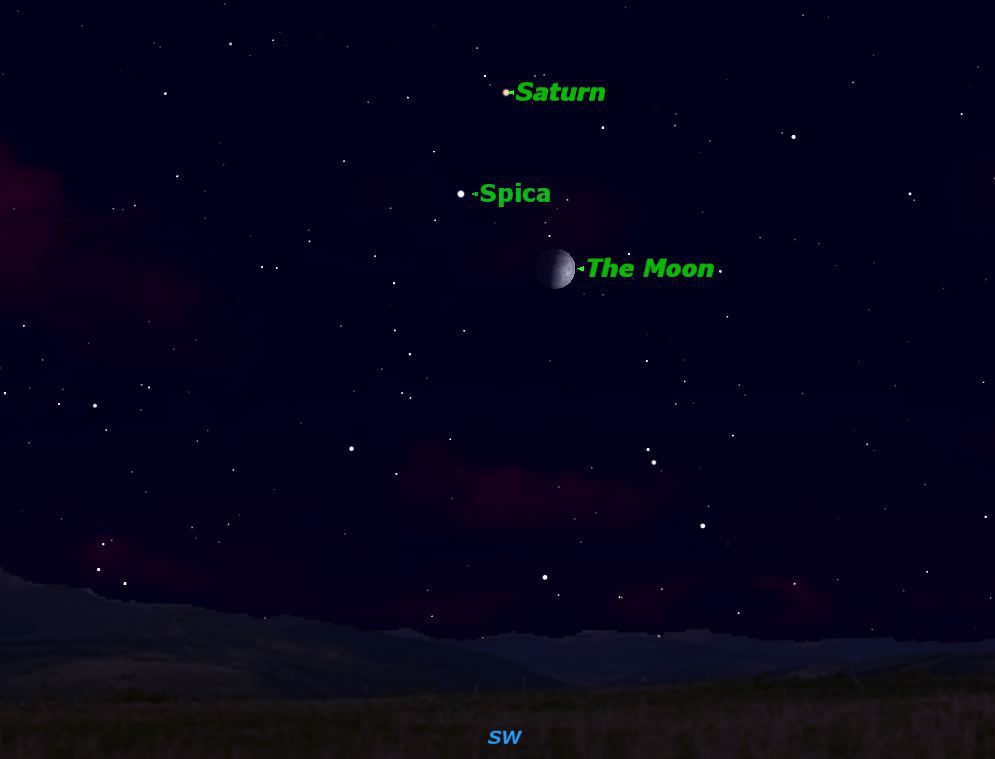
Planets
Mercury is in the evening sky but very close to the Sun all month.
Venus moves from being an evening “star” to being a morning “star” by passing in front of the Sun on June 5.
Mars is shrinking rapidly in size and brightness. On June 21 it moves from Leo into Virgo. Mars is high in the southwest at sunset and sets around 1 a.m.
Jupiter reappears in the morning sky in Taurus, approaching Venus towards the end of the month.
Saturn continues to be a bright object in Virgo, setting around 2:30 a.m.
Uranus spends the month in the morning sky in the northwestern corner of the constellation Cetus, a rather strange place for a planet to be, since it is not one of the twelve zodiac constellations..
Neptune rises around 1 a.m. in Aquarius, and is visible the rest of the night.
This article was provided to SPACE.com by Starry Night Education, the leader in space science curriculum solutions. Follow Starry Night on Twitter @StarryNightEdu.
Join our Space Forums to keep talking space on the latest missions, night sky and more! And if you have a news tip, correction or comment, let us know at: community@space.com.

Geoff Gaherty was Space.com's Night Sky columnist and in partnership with Starry Night software and a dedicated amateur astronomer who sought to share the wonders of the night sky with the world. Based in Canada, Geoff studied mathematics and physics at McGill University and earned a Ph.D. in anthropology from the University of Toronto, all while pursuing a passion for the night sky and serving as an astronomy communicator. He credited a partial solar eclipse observed in 1946 (at age 5) and his 1957 sighting of the Comet Arend-Roland as a teenager for sparking his interest in amateur astronomy. In 2008, Geoff won the Chant Medal from the Royal Astronomical Society of Canada, an award given to a Canadian amateur astronomer in recognition of their lifetime achievements. Sadly, Geoff passed away July 7, 2016 due to complications from a kidney transplant, but his legacy continues at Starry Night.









